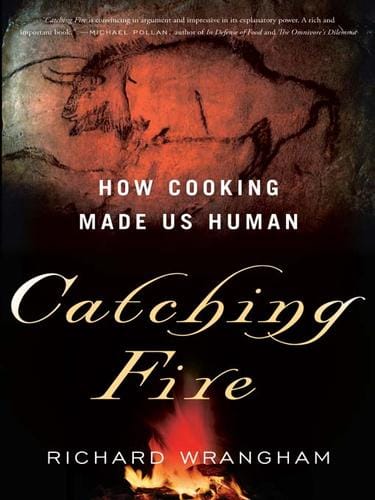Catching Fire: Plot, Themes, and Lasting Impact
Explore the plot, themes, and cultural significance of Suzanne Collins' Catching Fire, the explosive second installment of The Hunger Games trilogy.

Introduction
When Suzanne Collins released Catching Fire in 2009, readers immediately recognized that the second installment of The Hunger Games trilogy would not suffer the usual “middle-book slump.” Instead, the novel fans the flames lit by its predecessor, deepening Panem’s politics, expanding its world-building, and putting heroine Katniss Everdeen under even more intense scrutiny. The result is a young-adult dystopian tale that balances pulse-pounding action with sobering commentary on power, propaganda, and personal identity—qualities that still attract new readers and viewers more than a decade later.
Quick Plot Summary
Catching Fire picks up mere months after Katniss and Peeta’s unprecedented dual victory in the 74th Hunger Games. Far from basking in wealth, the pair face President Snow’s wrath for the perceived act of rebellion that allowed them both to survive. Forced into a Victor’s Tour across the districts, they witness firsthand the sparks of uprising their defiance ignited. Snow’s solution is the Quarter Quell, a special 75th Hunger Games that returns past victors to the arena. Katniss reluctantly enters again, this time navigating shifting alliances, hidden agendas, and a clock-like arena designed to break the strongest veterans. The book ends with Katniss rescued by rebel forces from District 13, Peeta captured by the Capitol, and full-scale revolution on the horizon.
Key Characters and Development
Katniss evolves from reluctant symbol to deliberate revolutionary. Her protective instincts for loved ones remain, but Catching Fire forces her to consider broader consequences: the lives of entire districts and the idea of systemic change. Peeta Mellark, often underestimated, emerges as the moral compass and master strategist whose public speeches quietly stoke rebellion. Finnick Odair, Johanna Mason, and Beetee Latier introduce shades of gray among past victors, each scarred by Capitol exploitation. President Snow’s poisonous charisma becomes more chilling, while Plutarch Heavensbee’s double role as Gamemaker and covert rebel architect adds narrative intrigue.
Major Themes That Spark Discussion
Rebellion and Authoritarianism
At its core, Catching Fire examines how authoritarian regimes respond to dissent and how ordinary individuals become revolutionaries. The Quarter Quell twist illustrates a government willing to cannibalize its own heroes to maintain fear. By spotlighting district unrest, Collins shows rebellion as both spontaneous and organized, fueled by shared suffering.
Media Manipulation and Spectacle
The novel doubles down on the first book’s critique of reality-TV culture. Katniss and Peeta’s every gesture is broadcast, spun, and weaponized. Caesar Flickerman’s interviews, Capitol propaganda spots, and even elaborate wedding dress fittings reveal how regimes curate narratives to distract and control citizens. Readers are invited to question their own media consumption habits.
Identity, Trauma, and Survival
Katniss grapples with PTSD, survivor’s guilt, and the performative roles thrust upon her: victor, lover, and mockingjay. Her internal conflict—be true to herself or play along to keep others safe—resonates with anyone who has felt forced to wear masks. Other victors share similar trauma, exposing the lingering wounds beneath Capitol glamour.
Symbolism: The Mockingjay Takes Flight
The mockingjay pin, introduced in The Hunger Games, becomes a full-blown symbol of defiance in Catching Fire. Cinna’s wedding-dress transformation into a black feathered mockingjay costume airs live, cementing Katniss as the rebellion’s living emblem. The bird itself, an accidental hybrid the Capitol never intended, mirrors the unpredictable nature of dissent: once created, it cannot be controlled. The image recurs in graffiti, whistles, and covert salutes, uniting disparate districts under one banner.
From Page to Screen: Movie Adaptation Highlights
Lionsgate’s 2013 film adaptation, directed by Francis Lawrence, faithfully captures the novel’s darker tone while amplifying its political stakes. New locations such as District 11 during the Victor’s Tour and the lavish Capitol parties enrich world-building. Jennifer Lawrence’s nuanced portrayal of Katniss conveys visible trauma, and Philip Seymour Hoffman’s Plutarch adds subtle layers of intrigue. The film streamlines subplots but preserves key beats—Cinna’s off-screen death, the arena’s spinning clock, and the cliff-hanger rescue—making it one of the rare adaptations praised by both critics and fans.
Why Catching Fire Still Resonates
Long after dystopian YA’s commercial peak, readers return to Catching Fire because its themes feel increasingly relevant. Surveillance technology, manipulated news cycles, wealth disparity, and authoritarian backsliding dominate modern headlines. Katniss’s skepticism toward imposed narratives encourages digital-age audiences to question the information flooding their feeds. Meanwhile, the novel’s emphasis on community—alliances in the arena, secret handshakes in District 12—reminds us that solidarity remains the most potent weapon against oppression.
Final Thoughts
Catching Fire is more than a bridge to the trilogy’s finale; it is a standalone study in how revolutions ignite, how symbols become rallying cries, and how individuals wrestle with both private trauma and public expectation. By combining adrenaline-charged set pieces with incisive social commentary, Suzanne Collins crafted a narrative that continues to inspire debate, scholarship, and creative adaptation. Whether you are revisiting the series or stepping into Panem for the first time, Catching Fire promises a blaze of suspense and insight that refuses to be extinguished.



